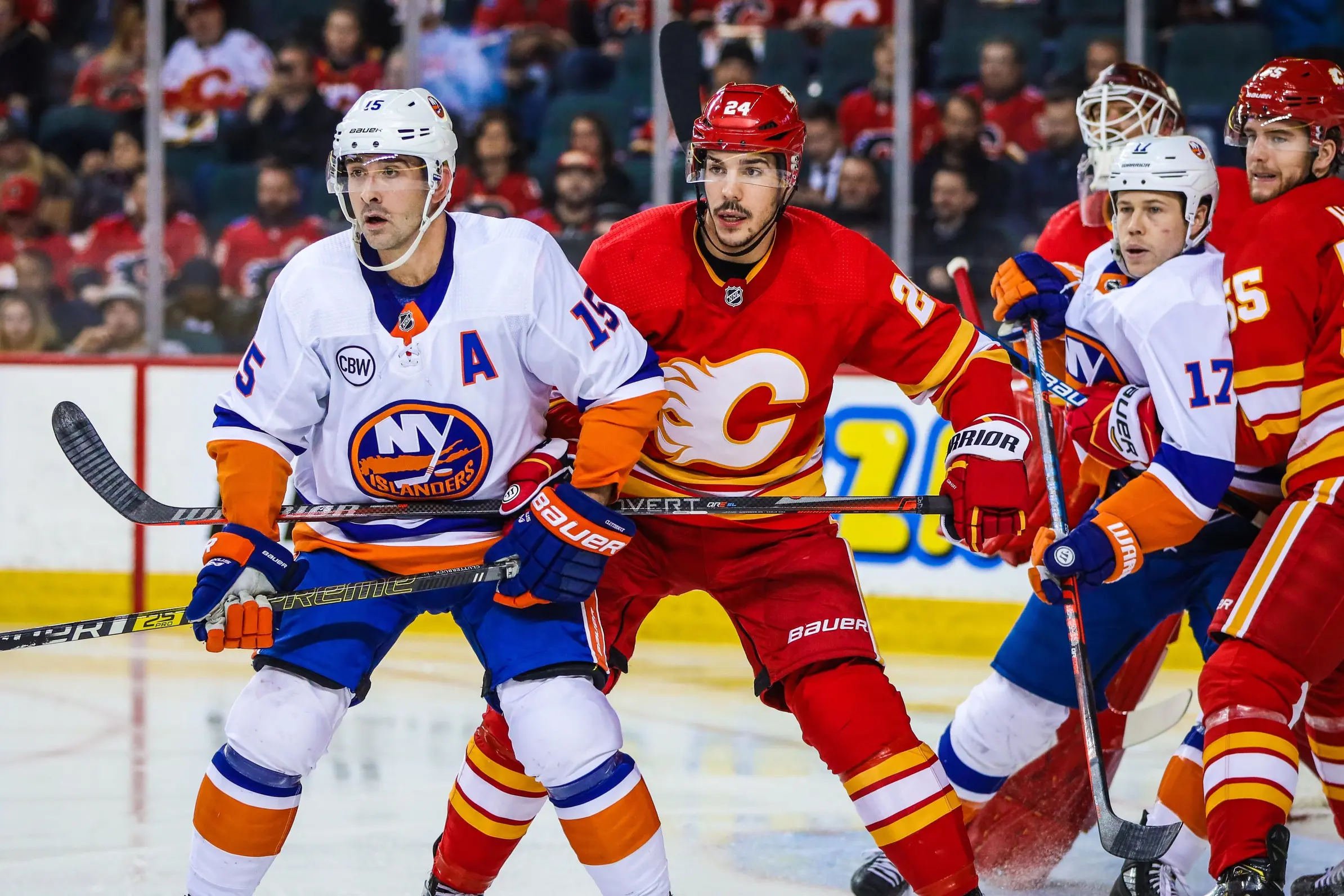FlamesNation player evaluation: Travis Hamonic

By Ryan Pike
4 years agoTravis Hamonic had a rough introduction to the Calgary Flames blueline in 2017-18. But he rebounded in 2018-19, establishing himself as a reliable presence on the back end.
2018-19 season summary
Hamonic had a strong season, particularly in that he avoided some of the wild swings between peaks and valleys that characterized his first campaign with the Flames – y’know, the one where he spent half the year in his own end.
| Games played | Goals | Assists | Points | TOI/GP | 5v5 CF% | 5v5 CF% rel | OZS% | PDO |
| 69 | 7 | 12 | 19 | 20:52 | 54.26 | -0.33 | 55.05 | 0.997 |
Hamonic missed 13 games this past season: eight after breaking his jaw in a fight on the opening night of the season (in defense of rookie Dillon Dube), then a trio of games in January and February due to an unspecified lower body injury. He was a healthy scratch for a pair of games after the Flames clinched the conference and division late in the season.
In a departure from his prior role as TJ Brodie’s partner, Hamonic played the entirety of the season on the second pairing with young Noah Hanifin. Similar to how he was used with Brodie, his job was basically to help smooth out some of Hanifin’s defensive lapses. Hanifin’s game is still a tad uneven, but Hamonic did a credible job evening out his defensive game a bit.
Hamonic also played on the first penalty killing unit with Mark Giordano. Occasionally he was moved away from Hanifin mid-game by head coach Bill Peters, usually playing with Oliver Kylington or Juuso Valimaki in a move to shake up chemistry a bit.
Possession-wise Hamonic had the best Corsi For percentage of his career, beating his previous career best by almost three per cent. In terms of rates, he rated first or second in most shot generation metrics – shots, shot attempts, scoring chances and high-danger chances – but was a bit all over the place for the shot suppression metrics (ranking between third and fifth among regular defenders). Even with the noise relative to his teammates, he had the best suppression and generation rates of his entire career.
Compared to last season
As we noted a few weeks back when looking at some quirks in James Neal’s season, Hamonic came to Calgary from Brooklyn to kick off 2017-18 and had an across-the-board improvement in his underlying metrics – offensively and defensively. He just couldn’t find any chemistry with Brodie.
He seemed to really find a nice match with Hanifin, despite the youngster’s occasional defensive challenges, and that allowed that duo to spend less time in their own zone and contribute offensively to wins. Combined with Hamonic getting shots on net more frequently, the second pairing was a big contributor to the team’s regular season success.
What about next season?
Hamonic turns 29 years old in August and will be entering the final year of his current contract (with an AAV of $3,857,143. From a pure hockey perspective, he seems like a great fit for the team. He’s an effective right shot defender, and he’s arguably the only defender that can reliably play the physical style of game that teams need to have in the playoffs – Rasmus Andersson has this in his game, as does Alexander Yelesin, but neither has done it as consistently or well as Hamonic has.
That said, the 2021 Seattle Grinders expansion draft looms in two seasons and the team will have a lot of tough decisions to make on their blueline. For now, though, Hamonic seems like a natural fit on the back end and someone that can likely be relied upon for more of the same style of performance for the next season or two.
2018-19 player evaluations
Recent articles from Ryan Pike




